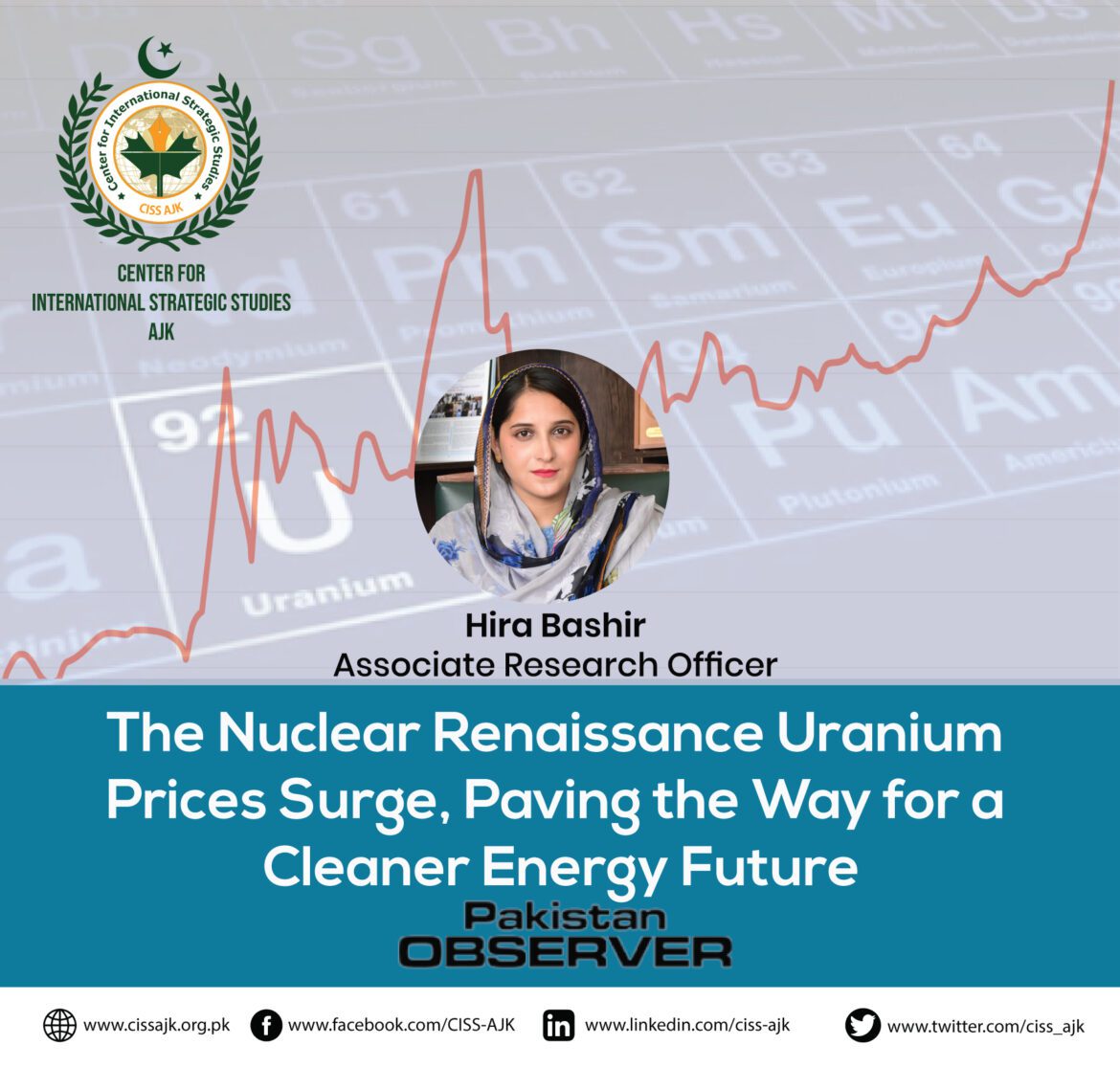678
URANIUM prices have exhibited a recent upward trajectory, portending a more environmentally sustainable energy future. This surge in uranium prices, approximately 12 percent within a single month, has exceeded the zenith observed in 2022 and attained levels unprecedented since 2011. This notable escalation in the valuation of uranium, colloquially referred to as “yellowcake,” is not solely a consequence of shifting market dynamics but rather a manifestation of a global resurgence in nuclear power. Governments and utility companies are grappling with the imperative to secure their fuel supplies, contributing to uranium prices reaching their highest point in over a decade. This substantial price escalation is underpinned by a convergence of factors reshaping the energy landscape.
The conspicuous surge in uranium demand can be attributed to several primary drivers. Firstly, there has been an amplified emphasis on energy security in response to prevailing geopolitical volatility. Governments worldwide, including those in Washington, Seoul and Paris, are increasingly recognizing the imperative of achieving energy self-sufficiency. Nuclear power has re-emerged as a dependable source of baseload electricity, capable of mitigating energy vulnerability in the aftermath of Russia’s full-scale invasion of Ukraine and the subsequent escalation in gas prices. Furthermore, there is a pronounced impetus toward sustainable energy development. Nuclear power is progressively acknowledged as a pivotal element in governments’ endeavors to fulfill their climate change commitments and reduce greenhouse gas emissions. Its capacity to consistently generate substantial energy output while emitting minimal carbon dioxide positions it as an invaluable tool in combatting climate change. The perception of nuclear power’s role was somewhat diminished following the Fukushima nuclear disaster in 2011, but the recent surge in uranium prices signifies a perceptual shift.
This evolving landscape is succinctly encapsulated by Grant Isaac, the Chief Financial Officer of Cameco, the world’s second-largest uranium producer: “The days of purchasing uranium at $40 are behind us, and likely so are those of $50 or $60. Fresh supplies will be necessitated in the near future.” The scarcity of investment in new mining ventures stemming from reduced uranium demand and pricing post-Fukushima has contributed significantly to the recent price escalation. Recent developments, including a coup in Niger, a significant uranium supplier and production challenges at key mines such as Cameco’s Cigar Lake mine and Key Lake mill in Canada, have exerted additional upward pressure on prices. Additionally, Orano, a state-owned nuclear enterprise in France, has grappled with shortage of critical chemicals, necessitating an acceleration of planned maintenance.
While uranium prices have not yet returned to their pre-Fukushima level of $73 per pound, the prevailing trend suggests substantial expansion in the nuclear power sector in the near term. It is noteworthy that the majority of this price surge is driven not by speculative investors but by energy utilities. According to Per Jander, Director of Commodities Trading at WMC Energy, “A squeeze is anticipated over the next few years. We are not merely reverting to pre-Fukushima levels but exceeding them,” partially due to the rapid pace of nuclear innovations propelled by China.
Looking ahead, the profound impact of this upsurge in uranium prices on the energy transition becomes evident. The resurgence of nuclear power as a pivotal source of carbon-neutral energy aligns seamlessly with global efforts to mitigate the repercussions of climate change. Nuclear power possesses the potential to play a substantial role in supplying clean and dependable electricity precisely when governments prioritize the decarbonization of their energy sectors. The World Nuclear Association has revised its projections for nuclear power’s contribution to global energy production and uranium demand, underscoring the sector’s potential to advance sustainability objectives.
In conclusion, the recent escalation in uranium prices signifies a pivotal juncture in the competitive milieu of the global energy market. Nuclear power is experiencing a renaissance as a potentially transformative contributor to a more secure and environmentally responsible energy future. This renaissance, bolstered by a robust uranium market, stands as a testament to nuclear power’s enduring relevance in the battle against climate change and energy insecurity. As nations shift toward cleaner and more reliable energy sources, the resurgence of nuclear power emerges as a testament to this transition. The nuclear renaissance has arrived, poised to make a substantial contribution to our quest for a more sustainable world.
—The writer is a research associate at CISS AJK working on emerging technologies, nuclear politics and new trends in warfare.
Email: hirakhan5090@gmail.com



